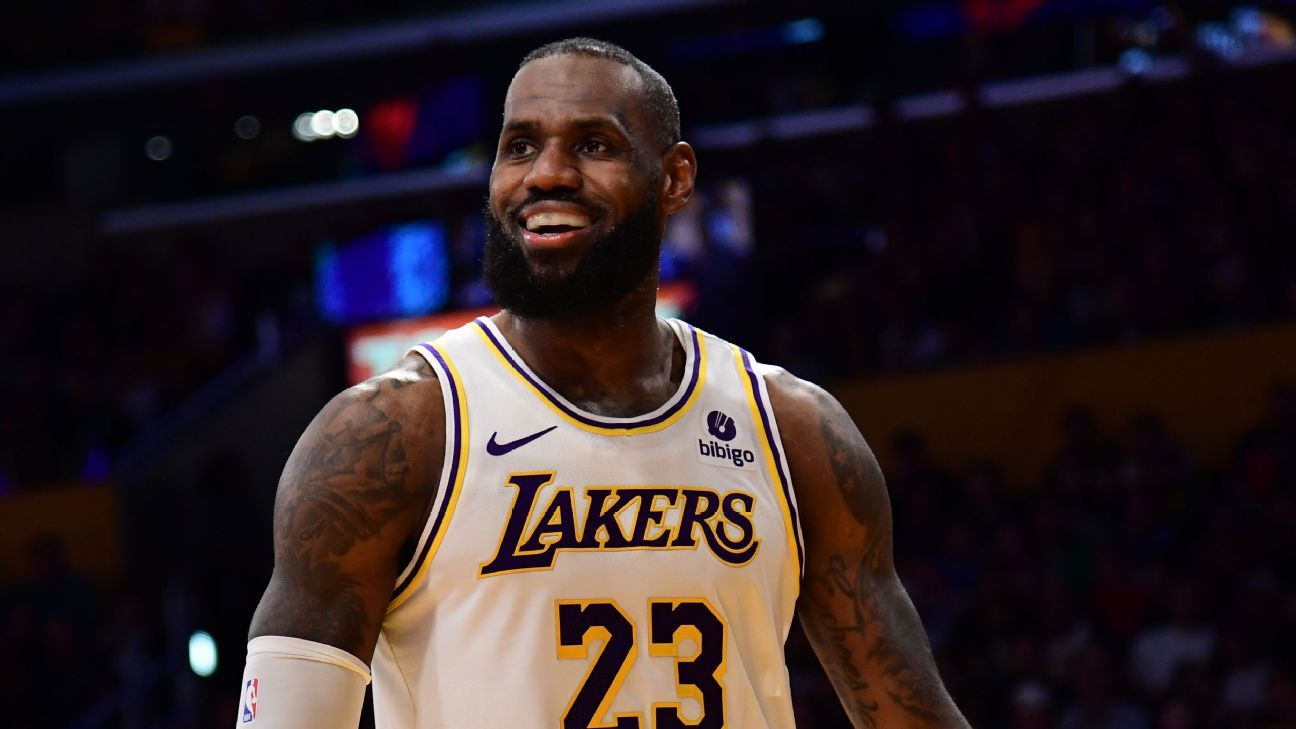OnePlus isn’t the kind of company that just goes away, and its persistence may have finally paid off with the OnePlus 12, a very impressive flagship phone that undercuts all others. This phone starts at $800, but trade-in incentives can drop it $100 or more, which feels like a bargain compared to competitors who hover around or above $1,000.
This phone feels a lot like the previous OnePlus 11 from a physical standpoint, but is functionally more attached to the company’s Open foldable phone because of the camera array. It’s a combination that works wonders in presenting what the brand is capable of when the pieces start to come together the right way.
OnePlus 12: Design and Build Quality
One thing about OnePlus is that it knows how to turn heads or raise eyebrows. Yet again, showing the OnePlus 12 to friends and acquaintances garnered awe and questions ranging from who the brand is, what the phone costs, and what it can do. I don’t think it’s a stretch to consider the 12 a beautiful phone, though I could do without the curved edges on the display. It’s high time OnePlus flatten that out like Samsung did in the S24 Ultra, as it only helps with the ergonomics of taking photos.
![]()
I also much preferred the matte finish on the back with its crystalizing effect in bright light. The company based the design in the Flowy Emerald variant (Silky Black is the other) on the Dart River in the Southern Alps of New Zealand. The glossy back of the OnePlus 11 was also nice, but this finish is an improvement in ways that count, especially for fingerprints. The rear camera module is bigger this time and it blends in more seamlessly with the rest of the scheme in the back panel.
![]()
The 6.8-inch QHD+ (3,168 x 1,440) AMOLED display with adaptive 120Hz refresh rate is also rated at 4,500 nits of peak brightness, though that last spec is a little misleading. Peak brightness comes in when viewing certain content on the screen, not necessarily covering the entire display on demand, so it’s hard to quantify exactly how bright the whole screen gets. It is brighter than the previous OnePlus 11 for sure, including better Gorilla Glass Victus 2 protection. IP protection isn’t a guessing game with this phone either since it carries an official IP65 rating. That means it has okay protection, but not quite as water-resistant as others are.
A performance boost comes courtesy of the Snapdragon 8 Gen 3 processor, plus a brand new vapor chamber cooling system and improved GPU to make this phone a viable mobile gaming device. The company hasn’t shied away from considering its phones dependable content editing platforms and that remains the focus here. Configurations start at 12GB RAM and 256GB of storage, with the option to go to a 16GB/512GB variant as well. A 1TB version also exists with limited availability.
The company also came to its senses to support wireless charging in this phone, and still offers ridiculous wired charging speeds as well. In my tests, I got from 0% to 100% in just 32 minutes based on the 120V load in North America. From 0% to 50%, it was just 13 minutes. Get OnePlus’ own AirVOOC wireless charging stand and you can fully charge the device wirelessly in 60 minutes.
OnePlus 12: Camera Features
The OnePlus 12 essentially runs the same rear camera setup as the Open, right down to the 50-megapixel Sony LYT-808 Type 1/1.4 image sensor (it was a 48-megapixel in the Open) with f/1.6 aperture. Pixel binning applies at all times to produce 12.5-megapixel images (23mm equivalent) unless you’re shooting in Hi-Res mode. Yet again, OnePlus won’t let you shoot in RAW at full resolution, so you have to accept the binned trade-off in that case as well.

The 64-megapixel OmniVision OVB64 telephoto is perhaps the shining star of the lineup, not just because of the 3x optical zoom (70mm equivalent), but also because OnePlus and Hasselblad clearly worked to make it better. It has a periscope design that you can utilize in most modes available in the camera menu, including Action mode, which I’ll get to further down.

For the 48-megapixel ultra-wide (14mm equivalent), OnePlus chose to keep it really familiar, sticking to Sony’s IMX581 image sensor that goes back to the OnePlus 11. You still get the same 114-degree field of view and f/2.2 aperture, so the only changes here stem from how the onboard software handles the images you take. It’s also where a macro mode can kick in once you get really close to a subject, indicated by an icon that appears onscreen.
The 32-megapixel front camera with f/2.4 aperture uses a Sony IMX615 image sensor with fixed focus and electronic image stabilization.
![]()
Hasselblad’s fingerprints are all over the color reproduction, and I detected the OnePlus 12 shooting a little warmer than its predecessor did. Apart from the Hasselblad filters available in most modes, there aren’t specialized features to select branded with Hasselblad. The idea here is that you get similar treatment regardless of what you’re capturing, mainly tweaking the output seen in the Open.
OnePlus 12: Image Quality
With the main wide lens, OnePlus lets you choose which default wide-angle focal length you want. By default, it’s 23mm (1x), but there’s also 28mm (1.2x) and 35mm (1.5x), both of which are in-sensor so digital zoom or software trickery isn’t foisted on you. It’s possible to get to these lengths by a slight pinch-to-zoom gesture that you’ll see noted when the screen shows 1.2x or 1.5x — a nice touch previously introduced in the Open that shows the versatility of Sony’s LYTA sensor.
Overall, the OnePlus 12 presents a more polished camera experience, even if there are some drawbacks, like iffy details along the edges. I would’ve preferred more neutral tones instead of the warmer ones exhibited here, but at least those are fairly easy to fix in post.
Main Camera
The thing about the main camera is that it’s as good as what you apply to it. For example, one of my favorites coming out of this phone is Action mode, which is available in the top menu between exposure and Google Lens. The mode doesn’t allow for switching default focal lengths on the fly, but does let you also take shots with the telephoto and ultra-wide lenses. It also lets you shoot in burst, which is huge for freezing the right action shot with minimal effort. Optical image stabilization is also great for that as well, but my one gripe is that OnePlus doesn’t offer Action mode in Master (formerly Pro) mode.

My feeling on this is partly a consequence of a camera that finds its groove better than previous models have. It was a pleasure taking photos with this phone because it opens the door to experiment a little. When you see results come in that look good, it only raises confidence the OnePlus 12 can get it done.
Hasselblad deserves praise for setting the tone — literally. Colors look great, with sharp details in daylight or low-light. No question, zoom in to pixel peep and the algorithms are exposed for messy pixels, but they’re hardly noticeable when looking at the images on most screens. Results are better when using Hi-Res mode, albeit when the lighting is optimal.
Telephoto
I pushed the telephoto lens wherever I could to get more out of it and was fortunate to be in situations where I could try things out. Action mode works well with this lens, freezing action in ways competitors frankly struggle with — including Samsung and Apple. Google’s Action mode is different in that it uses a slower shutter speed, whereas this one uses a faster one (with a high ISO). As an example, the photo of NHL superstar Connor McDavid was taken at 1/2000 second and 2500 ISO. Not surprising that digging in to see the pixels up close reveals more noise.
![]()
In low-light conditions, action shots are tough, but with the right amount of light on the subject, results can still turn out better than expected. The beauty of this lens is that it feels versatile, meaning it’s not just a matter of getting closer to a subject, but also about putting thought into framing and composition to get the best possible image. As much as I like the main lens and what it delivers, I keep going back to the telephoto to try new things.

OnePlus touts the hybrid zoom, with 6x in-sensor zoom as a good option — which it is — but beyond 10x, the results get steadily worse toward the horrible outcomes that come with 120x zoom.
Ultra-wide
There’s not much to say about this lens because it’s basically the same as the last two OnePlus flagships, save for the software-based improvements. Edge detail is still a problem, but at least the macro camera doesn’t feel like a forgetful add-on.
RAW and Hi-Res
I can’t understand why the OnePlus 12 doesn’t shoot in RAW at full resolution. The newly named Master mode is an excellent toolset, complete with focus peaking, histogram, and interval shooting along with the standard shutter speed, ISO, exposure, focus, and white balance options. You can also do more to compose the image by adjusting saturation, contrast, sharpening, and vignette. There’s even a built-in leveler that’s nice to see.
![]()
Interestingly, 12-bit RAW Plus is gone, leaving only JPEG and 10-bit RAW as the two output options, both of which turn out to be pixel binned 12.5-megapixel images. To go full-res, you have to accept JPEGs in Hi-Res mode, a balance that’s harder to accept when other brands like Samsung, Google, and Xiaomi are already doing it. I like that OnePlus finally gave Hi-Res its own mode in the camera interface, but it’s a little too barebones, as is.

When done right, you can get pretty spectacular images from either Master or Hi-Res. You can’t shoot in burst with either one, which feels like an oversight for Master mode if the images aren’t going to be full-res anyway. A software update could easily fix that and here’s hoping OnePlus does it sooner than later.
Video Features
This review focuses on still photos, but I can tell you OnePlus follows a similar path for video. You can record video in 8K at 24 frames per second (fps), 4K, 1080p, and 720p at 30 or 60fps. Still nowhere to be found is a 120fps selection to capture slow motion clips, so you have to go to the Slo-Mo video mode instead. There’s an option to record 10-bit HDR video with Dolby Vision and play them using ProXDR, so long as you have the right gear to view it with. Hasselblad’s filters are also available for video clips, except they won’t stick once you select HDR, nor are they applicable to the Slo-Mo and Dual-View Video modes.
Looking to Stand Out
OnePlus is looking to do what it can to break through and stand out against the entrenched Apple-Samsung-Google market in North America, and the OnePlus 12 has the goods to make further inroads as an excellent phone that feels like a bargain relative to what it costs. That the company’s trade-in offer accepts any phone in any condition for minimum $100 off guaranteed is hard to ignore. Trade-in values go all the way up to $700, regardless of the phone or brand, which is unheard of in the mobile space. You’d have to do it through OnePlus directly, but even so, it’s a good deal.
![]()
With the right phone and discount, you could get the OnePlus 12 in exchange for less than a mid-range model from other brands. Plus, it’s carrier-agnostic, since the 12 works with all major carriers and their 5G networks in the U.S. and Canada. The one catch is OnePlus promises four years of Android updates, plus five years of security updates, whereas Samsung and Google are currently at seven years for both.
Not to mention the lack of AI editing features inherent in the OnePlus 12. The company all but ignores the trend others are latching onto for reasons that aren’t clear. Could they come in future updates? Will they come at all? OnePlus isn’t saying.
Are There Alternatives?
As good as the OnePlus 11 was, the 12 is a marked improvement, particularly in the main and telephoto cameras. If you want a foldable with the best camera currently available, the OnePlus Open is your best bet right now. The Vivo X100 Pro may have OnePlus beat (and Samsung, for that matter) when it comes to telephoto capability, and it still offers one of the deepest camera toolsets in the industry. The Xiaomi 13 Ultra is another beast of a camera phone, with a successor Ultra 14 already out in China and a global debut coming later in February.
The Samsung Galaxy S24 Ultra proves highly iterative over its predecessor, with the biggest changes coming in the software and Galaxy AI editing features, though they may cost you in the long run. The Google Pixel 8 Pro finally adds manual controls and full-res RAW capture to the mix, sticking out as one of the best phone cameras in any pair of hands.
Should You Buy It?
Yes, because OnePlus makes it much easier than ever to do so when no other brand is this generous with trade-ins and discounts. If you’re looking for something different, you will probably be impressed with the entire software and hardware performance package in the OnePlus 12.

Brendan Martin is a tech enthusiast with a deep understanding of the latest technological innovations. He explores the intersection of science and technology, providing readers with insights into the digital revolution. When not immersed in the world of gadgets and code, Brendan enjoys experimenting with DIY tech projects.







